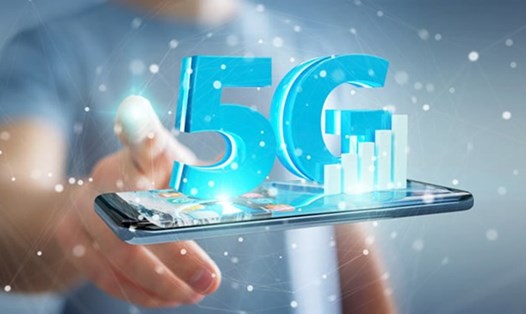With the rapid increase in mobile phone users and the rise of smartphones, mobile networks have become an indispensable tool in people's daily lives. Vietnam has witnessed the expansion of 4G and 5G networks, providing faster, more stable connection speeds and access to diverse online content, promoting the growth of mobile applications, online services and e-transactions.
In particular, 5G is considered by experts to be the "most advanced" technology, inheriting and developing more than the 4G network, thanks to which the download speed is faster, data transmission is smoother. The advantage that the 5G network brings is not only in speed but will open up completely new applications, creating a great revolution in the future, better serving the needs of users, improving the quality of modern, standard life.
Although it has been tested in Vietnam in recent years, the popularity of 5G technology to the general public is still relatively weak compared to 4G networks. The 5G technology coverage of network operators at this stage is relatively low, mainly for user experience and not really valuable for daily use compared to 4G technology that is currently covered nationwide by network operators.
However, at the moment, when compared to 4G networks, users still do not see too many advantages. The latest survey from Canalys shows that users in general are more interested in other features such as battery life and storage capacity instead of the network speed that 5G brings.
In Southeast Asia, which has rolled out 5G much faster than most European and North American countries, consumer demand for 5G smartphones is starting to wane. In 2022, the number of 5G devices fell 7% to 24.5 million (according to the Financial Times).
In Vietnam, besides the fact that there is not much difference in transmission speed, cost is considered the reason why users do not want to upgrade to 5G network. The cost of 5G application devices is quite high compared to the average income of Vietnamese people.
For example, Apple's 5G-enabled phone lines are limited to the iPhone 13, 14, 15, and 16 models, with the lowest price starting at VND14.7 million. Meanwhile, most of the company's other phone lines can use the 4G network, with prices starting at only VND5 million. Mobile device manufacturers also confirm that 5G phones will be more expensive to produce than normal, due to the high cost of components such as processors, modems, antennas, etc.

The transition from 4G to 5G technology creates a large volume of connections from more devices and access points, leading to many problems with cybercrime and personal data leaks, which is also the reason why users are wary.
The difference of 5G network lies in its ability to serve things in real time. Thanks to high speed and low latency, 5G network allows data transmission at near real-time speed, allowing the simultaneous connection of millions of devices, allowing autonomous cars and drones to access network resources flexibly and efficiently. However, these are all services that are not yet popular in Vietnam.
In addition, the coverage of 5G transmitting/receiving stations in our country is still relatively low, leading to the failure to exploit the maximum potential of 5G technology. The goal of 5G development is not only to improve the broadband capacity of mobile networks, but also to provide high-quality wireless connections to serve many industries, develop real-time applications, augmented reality, production automation, etc.
Therefore, at present, 5G technology is considered more suitable for businesses and industrial zones. For individual users, 4G network can fully meet the needs of network connection in daily life.
In conclusion, 5G will still be the key technology, aiming to enhance the experience and create more value for users in the future. To do this, it requires a lot of effort from Vietnamese technology enterprises in developing an ecosystem of products, services, and applications integrating 5G technology.
In addition, businesses also need to join hands to develop synchronous network infrastructure and produce equipment so that all users can access 5G technology in the future.










